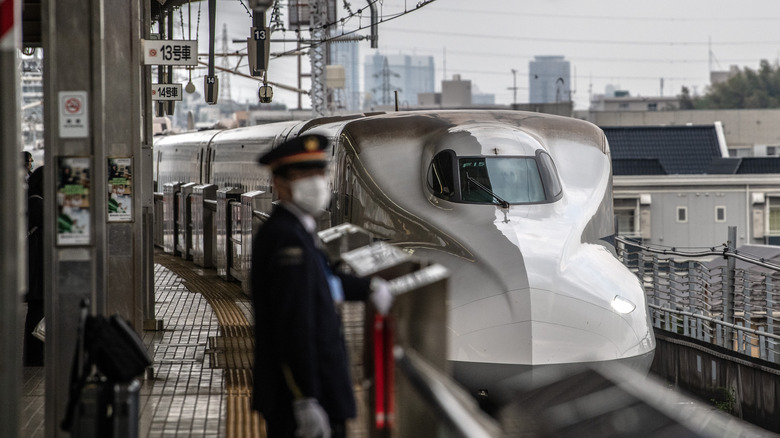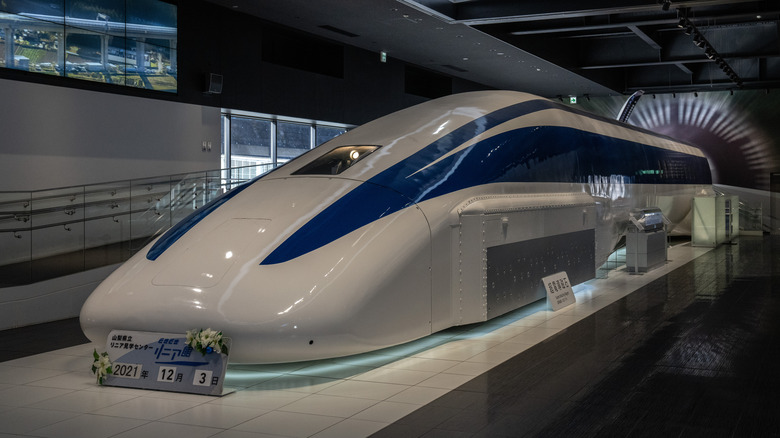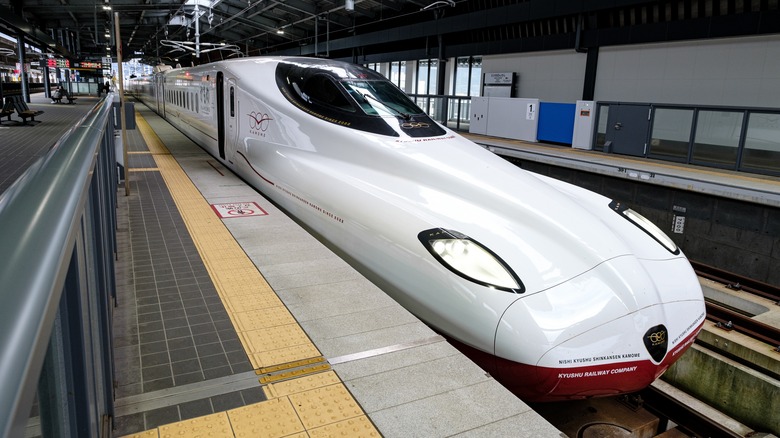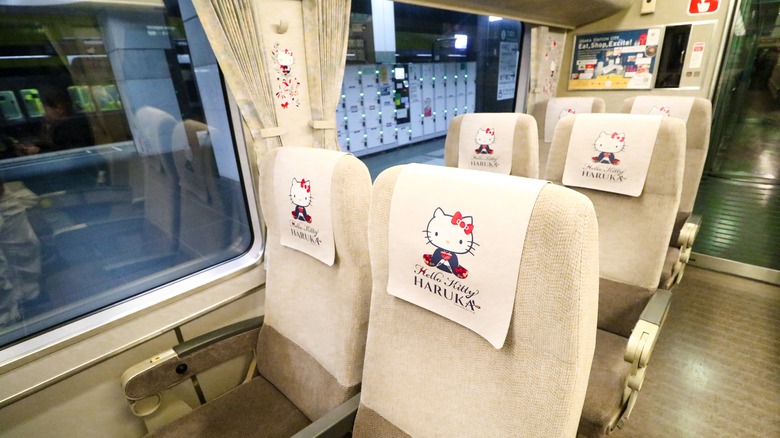The Science Behind Bullet Trains' Incredible Speeds
Since it first opened in 1964, Japan's high-speed rail system has been one of the country's most celebrated achievements. These trains, called Shinkansen, are known to English speakers as bullet trains. The word means "new mainline," which is an accurate descriptor, as they connect major cities across the country's mountainous terrain. Earlier editions of the bullet trains use a traditional propulsion system, which put even the fastest trains in the United States to shame, easily reaching speeds over 186 mph. By contrast, the fastest rail speed ever recorded in the United States was 170 mph.
But the most advanced bullet trains in the Shinkansen system are powered by maglev — a shortening of the words magnetic levitation. The aerodynamic bodies of these sleek, metal beasts slice through the air at 310 mph while their enormous weight is suspended above the track on a bed of magnets. The first maglev train in Japan was approved in 2014 and will connect Tokyo to Nagoya by 2027. There is a maglev in Shanghai, China, which is the fastest train on Earth.
But despite being incredibly fast, traveling aboard these trains feels silky smooth, allowing passengers to relax, eat and drink, or work as they hurtle across the country. Moreover, the trains are incredibly safe. The Shinkansen has carried more than 10 billion passengers without a single accident, an impossible safety record often attributed to Japan's high standards of rail operation. So, how exactly do these extraordinary trains reach such blistering speeds while maintaining a relaxed and safe atmosphere onboard? The secret lies in the science.
Electromagnets power maglev bullet trains
In short, modern bullet trains are powered by magnets. In long, these magnets aren't the kind you stick on your refrigerator, but rather a specialized type of electromagnet called a superconducting magnet that is up to 10 times more powerful than an electromagnet and is created by cooling the metal to 450 degrees Fahrenheit and below. The entire undercarriage of the train is coated with superconducting magnets, as is the track it runs on. These two sets of magnets face pole to pole, repelling each other and creating levitation. Meanwhile, the side walls of the track are covered in — surprise, surprise — even more magnets that keep the train from careening into one side or the other.
The levitation created by this magnetic system is the real magic of a maglev system. How, without the normal amount of friction that propels other vehicles, does a maglev train move? The answer, once again, is magnets. A strong electrical current running through another set of superconductive magnets propels the bullet train with large amounts of electricity that create additional magnetic fields. These fields pull and push the train simultaneously, which once made Japan's maglev the fastest train in the world.
More conventional bullet train designs still achieve high speeds
While maglev trains are the fastest bullet trains, they are far from the majority of Shinkansen, most of which are closer to a conventional train in their design but run on tracks built with stronger materials. Powered by an overhead supply line, these trains still rocket along at 155 mph or more.
The fastest and newest of these more conventional trains are the new N700S series, which entered service in the Tokaido Shinkansen line in 2020. The "S" stands for Supreme, which is intended to convey their superiority to the previous N700. Indeed, these sleek monstrosities live up to their moniker, and they reduce power by 7% compared to their predecessors, as well as featuring onboard batteries that can power the train at low speed in the event of an emergency. Since earthquakes are not uncommon in Japan, the N700S also includes an improved braking system and improved vibration detection. The train's distinctive wing shape helps to reduce air resistance, while the drive system is fitted with a "running wind cooling system." This train achieves speeds of 177 mph, which places it among the speediest bullet trains aside from those that use maglev technology.
How bullet trains stay safe at high speeds
Whether a maglev train or the more common bullet train designs that run on overhead power, these vessels careen through the Japanese countryside at blistering speeds. Even so, the passengers inside enjoy a relaxing ride free of turbulence, with comforts ranging from food service to entertainment. Moreover, the Japanese Shinkansen are astonishingly safe, without a single passenger casualty. In 2015, two passengers died in a fire after a man deliberately self-immolated aboard a bullet train bound for Osaka, but this bizarre incident was isolated and certainly cannot be blamed on the Japanese train system.
The secret lies not only in incredibly high safety standards but a system that enables them to be fulfilled. At the Shinkansen General Control Center, real-time information regarding the conditions of tracks, stations, and train locations enables quick decision making. For example, inclement weather might prompt the Control Center to issue a stop command before a train gets caught in a storm. There is also an inspection train colloquially known as Doctor Yellow that makes regular rounds and is equipped with sensors to detect problems with the power lines and track. It's no wonder Japan hasn't tried any dubious transport experiments like Elon Musk's failed Hyperloop. There's no beating the Shinkansen.
Japan is understandably proud of its fast, efficient, and safe train system, which has become one of the country's crown jewels, proving the country's achievements in engineering, planning and logistics, and infrastructure. There's even a chance America may soon get a taste of these futuristic trains. In Texas, Amtrak is exploring a bullet train from Houston to Dallas with the support of Japanese Prime Minister Fumio Kishida and President Joe Biden. The future, you might say, is coming fast.



